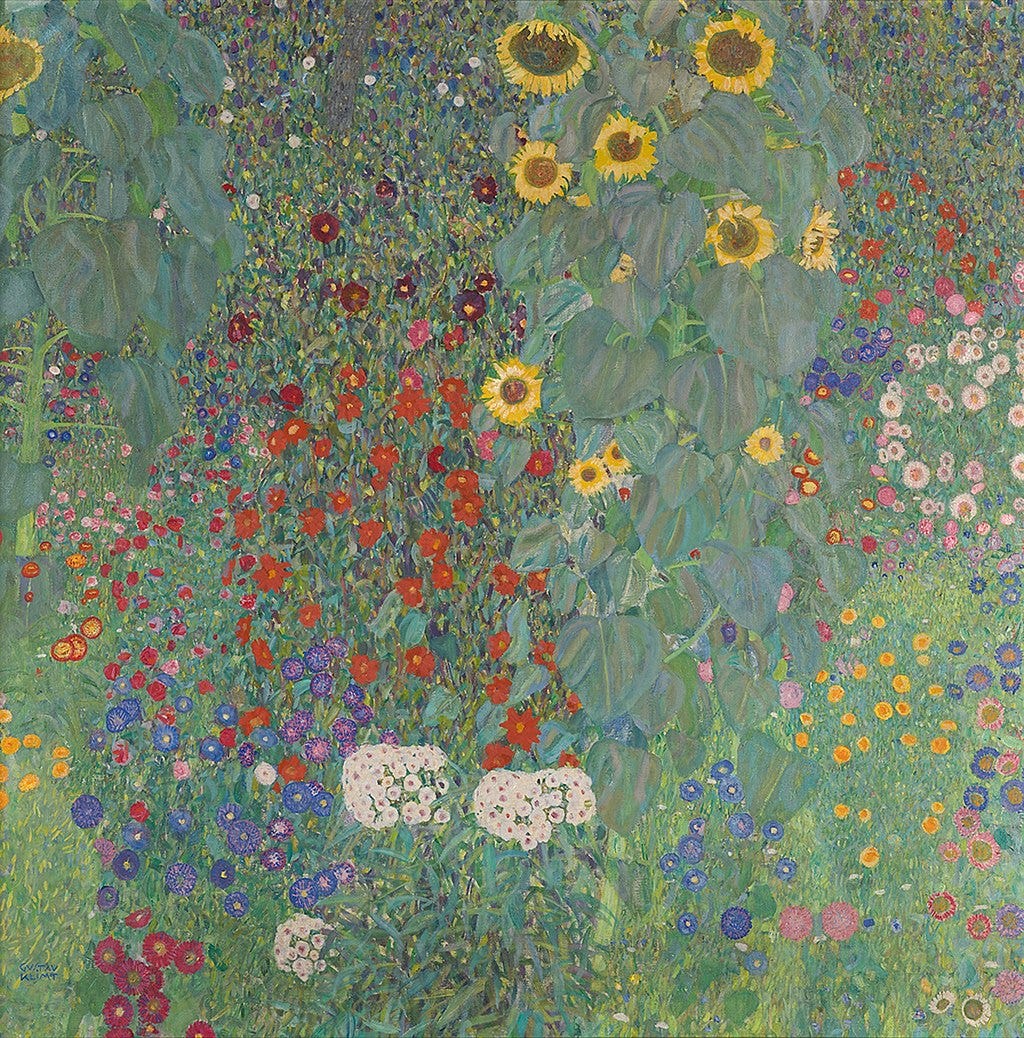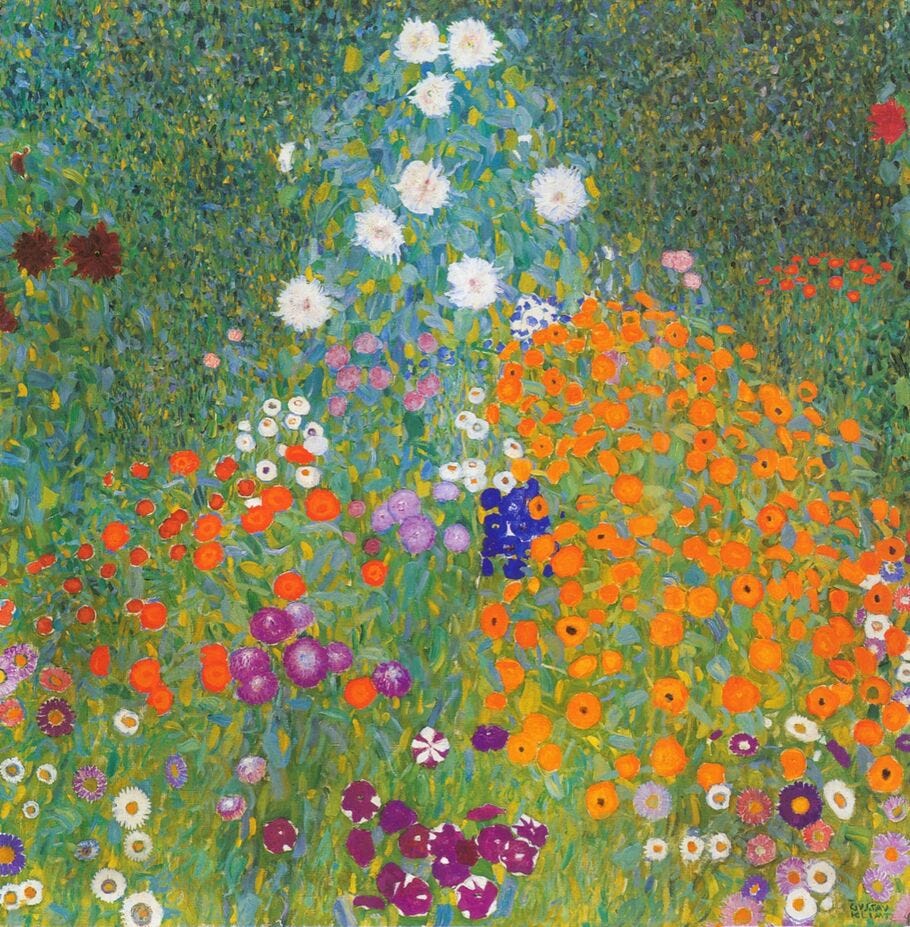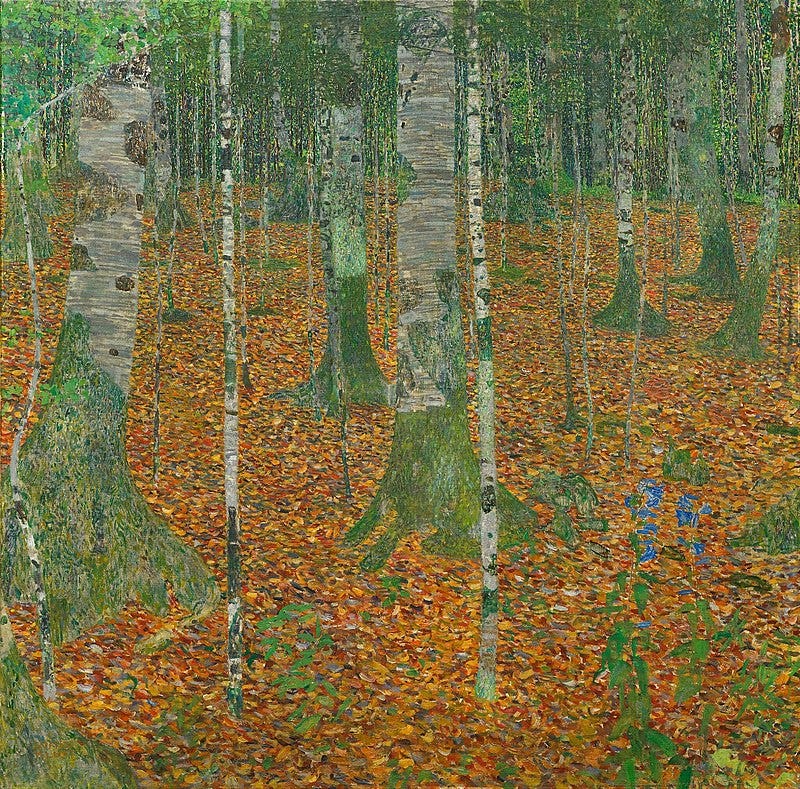Gustav Klimt is generally best known for his portraits of women - the most famous of which shimmer in spectacular gold.
But outside of his figurative work, Klimt also became an extremely passionate painter of landscapes and floral pictures towards the latter stages of his career.
This development was partly inspired by a visit to the major exhibition of Van Gogh paintings in Vienna during the early 1900s - where Klimt fell in love with Vincent’s brilliant colours and thickly applied brushstrokes.
But no doubt, it was also influenced by the artist’s natural love for all things decorative, and his deep affinity with the art of Japan (something which, incidentally, van Gogh himself had also been keenly inspired by during his own short lived career)
Hence, when we look at Klimt’s floral pieces here today, we are seeing him integrate all these styles with the same level of mastery as he balances his “orderly chaos” compositional schemes too.
On first glance, these works are a symphony (or perhaps even a cacophony!) of colour - giving the impression of having been thrown together at random, as if foretelling the drip paintings of Jackson Pollock a few decades later.
But look closer, and the level of thoughtfulness that has gone into all of these works becomes much more apparent.
In such broad compositions, Klimt paints each flower or leaf with wonderful detail; balancing the harmony of colours here with no less skill than Georges Seurat in his pointillist works.
And then when we zoom out a little - gazing at the paintings as a whole, with a more relaxed eye - we can’t help noticing hints of Klimt’s figurative works still emerging from out of the chaos too; almost as if these flowers are slowly coalescing into becoming a human form dressed in a beautiful floral ballgown.

By the time of his death in 1918 (aged only 55)- landscape and floral paintings took up almost a quarter of Klimt’s entire oeuvre as an artist.
And to date, one of his most expensive works ever sold at auction is a landscape of a Birch Forest (see below) - which sold for $104.5 million in 2022.
Though it is worth mentioning that this colossal price actually still pales in comparison to at least three other works by Klimt - all of which have fetched somewhere between $190 million to $210 million over the last few decades.








There's a small woods my husband and I ride our bikes through en route to many errands and part of the trail reminds me of Klimt's "Birch Forest" and a few Russian Impressionists. I love how beautiful art is parallel to beautiful places. The beauty goes round and round. Great post.
I’ve always preferred his landscapes!